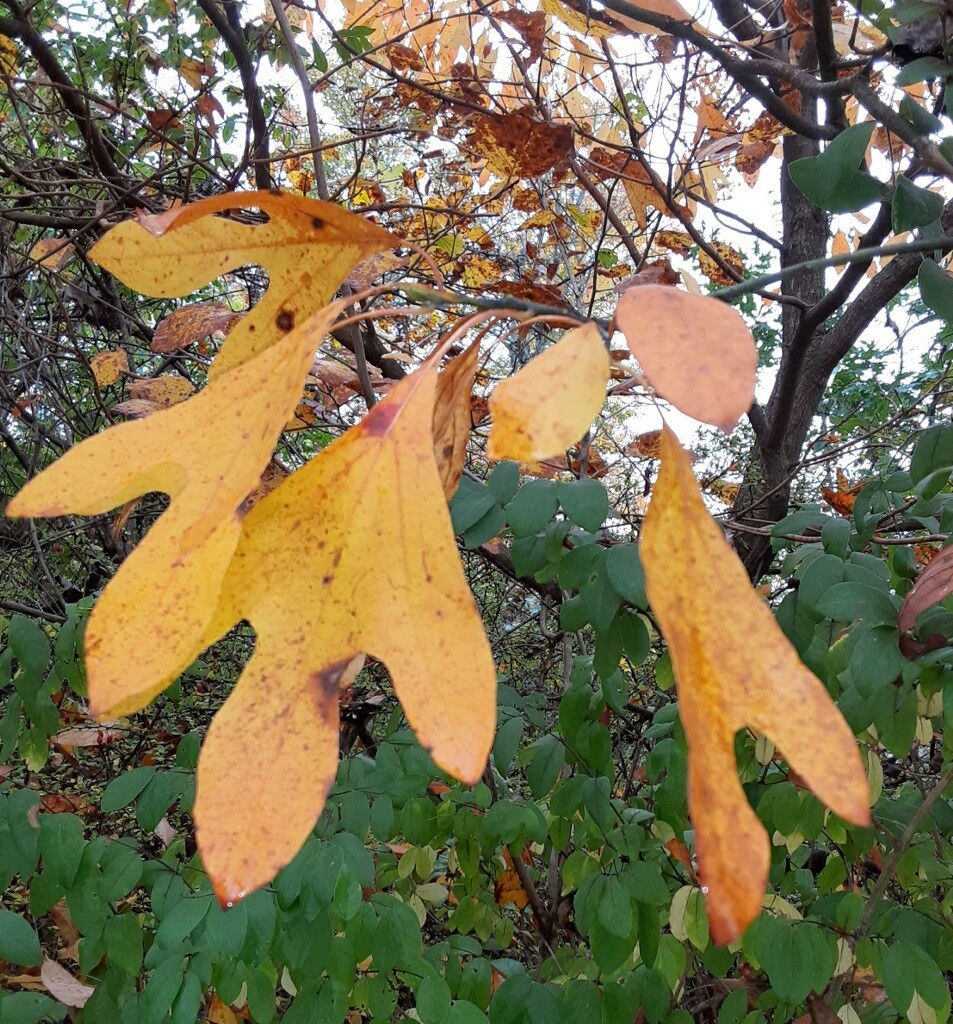By Susan Sprout
Bright standouts amidst the autumn colors are our native Sassafras trees. They can grow to a height of least sixty feet. One in Kentucky is one hundred feet tall. Look for them growing in hedgerows, forest openings, and on roadsides. If traveling on foot, do a close check on their variable leaf shapes, having zero to three lobes. They look like mittens to me…a left-handed one, a right-handed one, and a mitten with the pinky finger and the thumb sticking out on each side. There are some plain oval leaves with no lobes at all, too. I keep looking for one shaped like the Star-Trek “Live Long and Prosper” shape. No luck yet.

Sassafras is a member of the Laurel Family along with Spicebush (last week’s post), Sweet Bay (source of bay leaves for flavoring soups and stews), and Cinnamon (provider of ground cinnamon that makes just about everything taste better). Not to be outdone by its aromatic relatives, Sassafras has been used to flavor tea, root beer, toothpaste, chewing gum, tobacco, and soap. Its dried leaves are finely ground to make Filé Powder used as a thickener in Creole cooking. Since the 1960’s, its strong oil has not been used internally because it may cause liver and kidney damage.
Sassafras may have been one of the first medicinal plants sent to Europe by the Spanish from their colony in Florida. It was a major export because explorers and colonists at the time thought of it as a cure-all. They saw Natives using it for treating fevers, rheumatism, and as a blood purifier. My grandparents used Sassafras wood chips boiled in water as a spring tonic.

